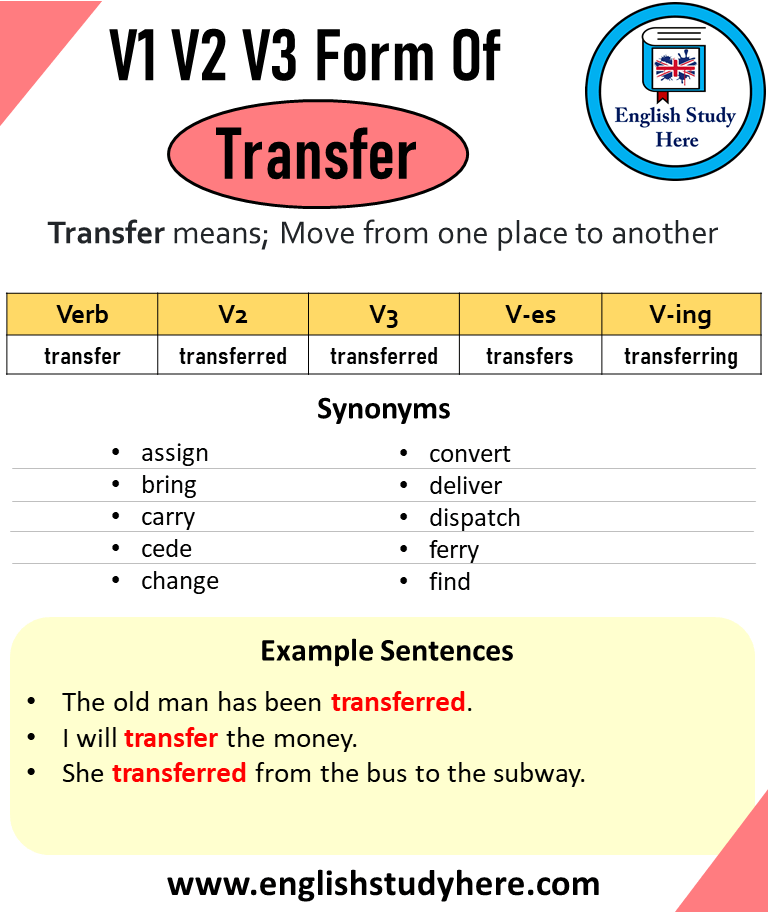Transfer Past And Past Participle Form V1 V2 V3 V4 V5 Form of Transfer
Do you ever find yourself puzzled by the various forms of the verb “transfer”? Whether you’re learning English, polishing your grammar skills, or simply curious, understanding the different forms of “transfer” can be a game-changer.
Imagine expressing your thoughts with perfect clarity and confidence, whether you’re writing an email, telling a story, or preparing for an exam. This guide will delve into the V1, V2, V3, V4, and V5 forms of “transfer,” making it easy for you to grasp and apply in your everyday language.
By the end of this article, you won’t just know the forms; you’ll understand how to use them effectively to enhance your communication skills. Ready to transform your language proficiency? Let’s dive in!

Credit: www.youtube.com
Transfer Verb Forms
Verbs change form. This is important. The verb “transfer” has different forms. These forms are called V1, V2, V3, V4, and V5. Each form is used differently.
V1is the base form. We use it for present actions. Example: “I transfer money.” V2is the past form. We use it for past actions. Example: “I transferred money yesterday.”
V3is the past participle. It helps with perfect tenses. Example: “I have transferred money.” V4shows ongoing actions. Example: “I am transferring money.” V5is used for third person singular. Example: “He transfers money.”
Use these forms correctly. It helps your writing. It makes your speech clear.
Past Tense Of Transfer
The past tense of transferis transferred. This is when you moved something from one place to another. For example, you moved a book to a new shelf. It’s easy to remember. Just add “ed” to the end. This makes it past tense.
The past participle is also transferred. You use it when talking about an action that is done. Like, you have transferred your files to a new computer. It tells us the action is complete. Both forms are the same. Simple and straightforward.
Past Participle And Other Forms
The word transferis common in English. It changes form in different tenses. Knowing these forms helps with writing and speaking. The past tenseof transfer is transferred. The past participleis also transferred. These forms are used for actions that are completed. For example, “I transferred the money yesterday.”
Verbs have different formsto show tense and action. Here are the forms of transfer:
| Form | Example |
|---|---|
| V1 | Transfer |
| V2 | Transferred |
| V3 | Transferred |
| V4 | Transferring |
| V5 | Transfers |
Using the right verb formis important. It helps with clear communication. Practice using these forms in sentences. This makes writing and speaking better.

Credit: englishstudyhere.com

Credit: englishstudyhere.com
Conclusion
Understanding the transfer verb forms is crucial for language learners. Mastering V1, V2, V3, V4, and V5 forms boosts your English skills. Practice regularly to remember these forms. They help in writing and speaking fluently. Mistakes will lessen with practice and familiarity.
Keep revisiting these rules to stay sharp. Make learning fun by using these forms in real conversations. This approach aids retention and builds confidence. English becomes easier with consistent effort. So, dive in and explore the language. Happy learning!






